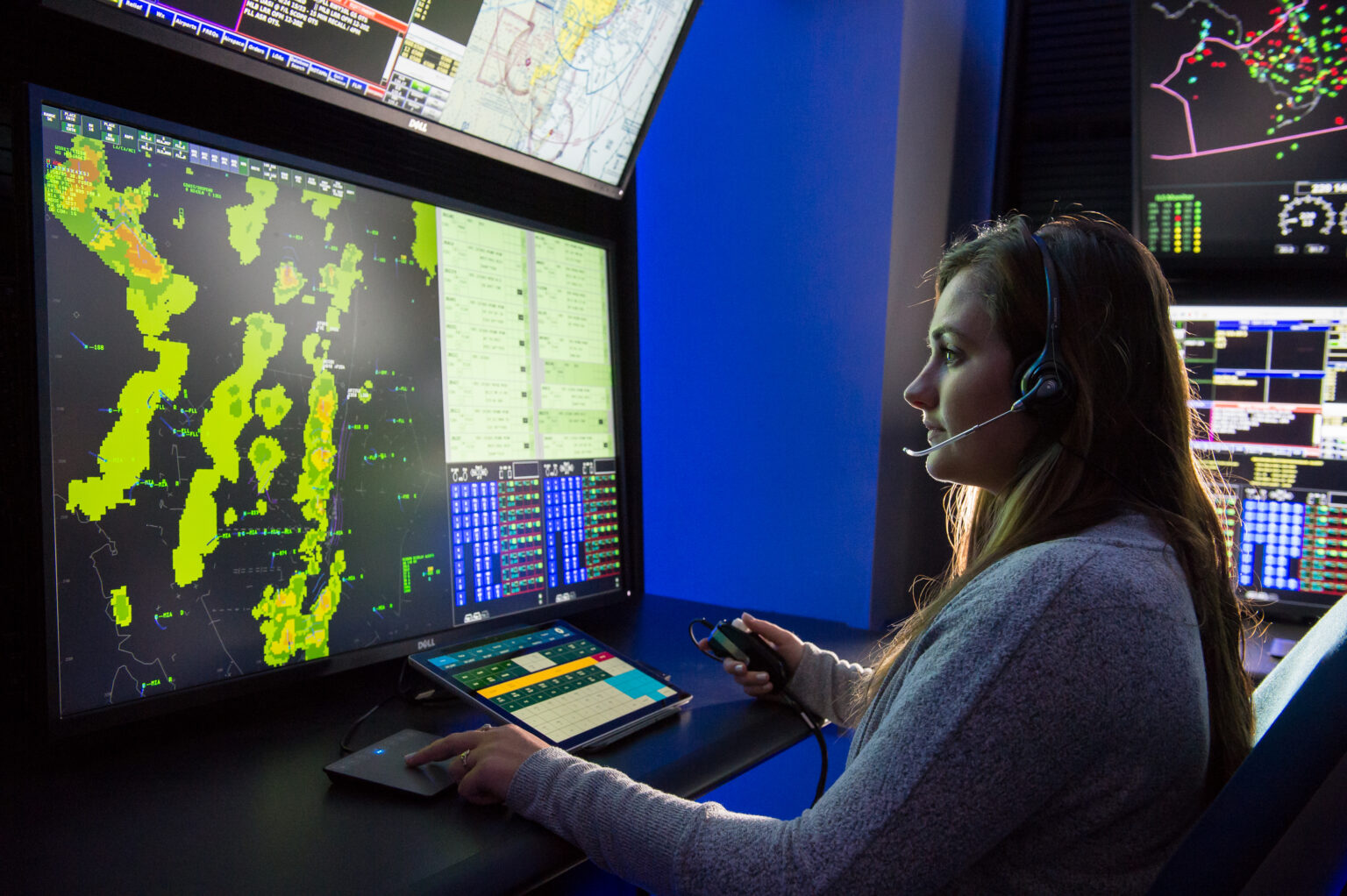Less is more - New workstations could clear the clutter for air traffic controllers

Anyone who has watched TV while scrolling around on their smartphone knows how easy it is to miss or forget something. Academic research backs that up; a Bryan University study said multitasking can lower IQ by as much as 15 points – about the same effect as trying to function the day after an all-nighter.
Few professions demand as much multitasking as air traffic control, where controllers monitor multiple data streams and work as many as eight pieces of technology at the same time. To lessen their burden, Raytheon Intelligence & Space, a Raytheon Technologies business, has built a prototype workstation that combines the clutter of monitors, trackballs and keyboards into a much cleaner configuration using tablet and touchpad tech.
The system is called the Multi-platform Automation Re-Hosting Solution – or MARS for short. So far, the reception among air traffic controllers has been good, said Jackie Dent, who leads the project for Raytheon Technologies.
“Typically, adjusting to new technology can be daunting to air traffic controllers due to retraining and recertification requirements,” Dent said. “So when we debuted a MARS proof of concept at several major shows last year, we were surprised and happy when not only did the controllers like MARS, many of them spent 10 minutes or more filling out what they thought about it and how we could make improvements.”
With MARS, controllers use one or two 43-inch touchscreen monitors to see an integrated picture of flight, surveillance, weather and airport data from multiple air traffic applications. Those screens can show air traffic applications such as Raytheon Technologies’ Standard Terminal Automation Replacement System, or STARS, voice recording and switching systems, airport surface detection system alerts, weather display systems and electronic flight strip systems, or logs of the instructions controllers give to pilots.
The system can scale to the needs of different air traffic control facilities, which can vary greatly.
“Each airport has unique airspace configurations and runway layouts; they could be crossing or parallel or they could have a single approach and depart path because of mountain ranges,” said Meghan Smart, Raytheon Technologies MARS strategist. “At airports, it’s not one-size-fits-all, and since MARS is display agnostic, site adaptable and has a common architecture, it’s capable of using whatever systems are already in place.”
MARS could also improve the flow and feel of the air traffic control facilities themselves – especially those where monitors are mounted on walls and controllers must walk back and forth to look at them. A single MARS system could replace those monitors and individual input devices.
“You never have to take your eyes of the screens,” Dent said. “And we’ve also made MARS so it can be adaptable to every position. Today, you need different equipment depending on your role. If you have five systems at a workstation, then you’d have five displays, five keyboards, five trackballs. MARS reduces that to two displays, one track pad and one tablet that’s a virtual keyboard.”
Then there’s the typing. Air traffic controllers use keyboards with color-coded function buttons, and they vary from position to position. Many use an “ABC” layout, which is far different from commonplace QWERTY keyboards. MARS lets controllers determine their own keyboard layout – kind of like when video games let players customize the control buttons.
“You can personalize the layout so you don’t have to hit a function key and enter a string of alphanumeric characters for your maps to come up, but instead you hit a single key, and, boom, maps,” Dent said. “If you’ve been using an ABC keyboard for 20 years, then you can keep the ABC layout; however, we have a whole generation that’s grown up using QWERTY on their computers, tablets and phones, so they can setup their keyboards for QWERTY.”
Cursor control has also stepped into the modern age; a touchpad replaces the old-fashioned trackball, and users can tell the system which hand they want to use. The rest is all swiping, pinching and tapping – just like everyone does on their smartphones.
“In this day and age, a lot of controllers end up touching the screens out of force of habit even though they’re not touchscreens,” Dent said. “So if we help move them to a touchscreen, tablet and trackpad, we’ll actually give them what they’ve been wanting.”
MARS would complement Raytheon Technologies’ STARS, which is in use at 600 Federal Aviation Administration and Defense Department locations in the U.S. as well as DoD locations overseas. That system tells controllers the altitude, position and speed of aircraft taking off and landing at airports. The current STARS display will reach the end of its service life in about 2025.
“MARS is an upgrade that offers the latest technology, usability and provides greater situational awareness,” Dent said. “Also controllers won’t need to be retrained on STARS, and we’ve gotten rid of all the serial connections and special cables, because STARS will plug right into MARS.”
The system can be used beyond what’s known as the terminal airspace, or the area within 60 miles of an airport. That means MARS could help control air traffic for en route and oceanic flights.
“When we showed the proof-of-concept MARS, a lot of the controllers automatically tied it to STARS,” Dent said. “We’re known for STARS, so we had some controllers say that they’d move from en route to terminal if they got to use MARS. At the upcoming shows when we show the MARS prototype, we’re making sure everybody knows that it’s a good fit at every air traffic control position.”


.png)


.jpg)



Comments
There are no comments yet for this item
Join the discussion